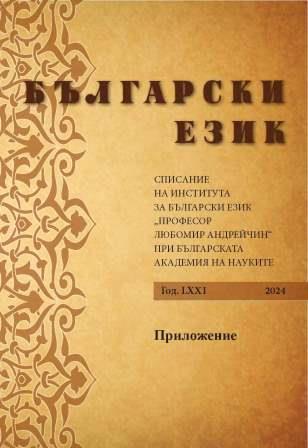За някои трайно очертаващи се тенденции в българската разговорна реч и в речта на медиите през последните десет години
On Some Continuing Trends in Colloquial Spoken Bulgarian and the Language of the Media over the Last Ten Years
Author(s): Marieta TsvetkovaSubject(s): Language studies, Language and Literature Studies, Theoretical Linguistics, Applied Linguistics, Phonetics / Phonology, Lexis, Semantics
Published by: Институт за български език „Проф. Любомир Андрейчин“, Българска академия на науките
Keywords: colloquial speech; media; secondary orality; verb usage; condensing the expression; polite forms; informal forms of address; high degree of reinforcement; short fixed expressions/clichés
Summary/Abstract: The article describes three continuous trends in Bulgarian colloquial speech. The first one is related to changes in the use of verbs, consisting of: a) swarming of verbs derived from nouns, incl. from foreign words, and b) condensing of the expression by omission of: the verb to drive/cause, the reflexive particle se and some prepositions. A survey was conducted on the use of verbs registered as having undergone a process of dereflexivity and/or transitivisation. The answers of respondents point to an overwhelming disapproval of the described verb use strategies. Thus, a more appropriate and accurate way to define this process is as an effort to condense the expression by omitting certain elements, which is in accordance with the principle of economy in colloquial speech. The second trend presented is the progressive reduction of the use of forms expressing politeness and their increasingly frequent replacement with forms for informal addressing. There is a relatively high degree of tolerance towards this speech practice from both researchers and native speakers. The third trend concerns the use of two types of short fixed expressions/clichés, representing constructions with one or two fixed components and one or two variables. They condense the maximum content into a short form and “leave” freedom for interpretation by the interlocutor/listener, being additionally marked either by strong expressiveness or originality (usually purposefully sought), which adds another element for “interpreting and decoding” by the interlocutor/listener.
Journal: Български език
- Issue Year: 71/2024
- Issue No: Special
- Page Range: 388-403
- Page Count: 16
- Language: Bulgarian

